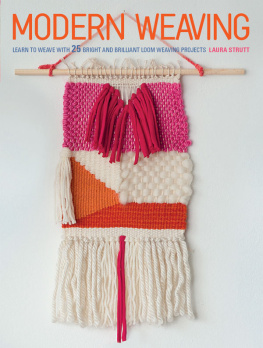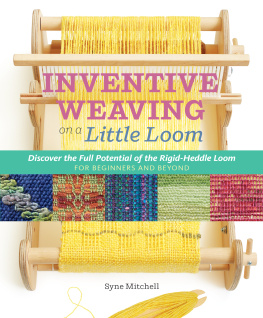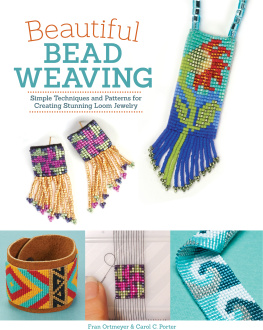MODERN
WEAVING
LEARN TO WEAVE WITH 25 BRIGHT AND
BRILLIANT LOOM WEAVING PROJECTS
LAURA STRUTT


To my incredible husband, John, for everything.
Published in 2016 by CICO Books
An imprint of Ryland Peters & Small Ltd
2021 Jockeys Fields
London WC1R 4BW
341 E 116th St
New York, NY 10029
www.rylandpeters.com
10 9 8 7 6 5 4 3 2 1
Text Laura Strutt 2016
Design, illustration, and photography
CICO Books 2016
The authors moral rights have been asserted. All rights reserved. No part of this publication may be reproduced, stored in a retrieval system, or transmitted in any form or by any means, electronic, mechanical, photocopying, or otherwise, without the prior permission of the publisher.
A CIP catalog record for this book is available from the Library of Congress and the British Library.
eISBN: 978 1 78249 516 1
ISBN: 978 1 78249 362 4
Printed in China
Editor: Kate Haxell
Designer: Elizabeth Healey
Photographer: Caroline Arber
Step photographer: Martin Norris
Stylist: Susie Clegg
Chart illustrator: Kate Haxell
In-house editor: Anna Galkina
Art director: Sally Powell
Production controller: Mai-Ling Collyer
Publishing manager: Penny Craig
Publisher: Cindy Richards

CONTENTS
CHAPTER 1:
NATURAL
CHAPTER 2:
FRESH AND MODERN
CHAPTER 3:
GRAPHIC AND BRIGHT

t he ancient art of weaving has been enjoying a colorful renaissance. This centuries-old fiber craft is one that is not only rewarding in the creation of striking wall hangings, textile art, and more practical itemssuch as pillows, accessories, and morethis is a craft that is relaxing and almost meditative in nature.
Whether or not you have had experience in weaving, I wanted to share with you a collection of techniques and projects that will enable you to get creative and explore this tactile and absorbing textile craft. If you dont already have a loom, you can learn to create your own right away with step-by-step instructions for a super-simple pictureframe loom (see ).

Weaving is one of the most accessible crafts and novices will be amazed at how quickly they can master different techniques to create wonderful textile effects of their own. In this book I show you the skills needed to warp your loom and start weaving, change colors, and add tassels and textures with different fibers and trimmings. You will discover how to create shapes, colorful designs and motifs, and how to finish and display your woven pieces. I also explain all the lingo, so youll know your warps from your wefts, and your shuttles from your sheds in no time!
I wanted to not only share the technical aspects of this traditional craft, but also a range of inspiring makes from wall hangings and accessories to pillows and bags. For me, the process of weaving is as relaxing as it is creativethe smooth, repetitive actions of your hands soon feel like a rhythmic dance, and it is not long before the design takes shape in front of you. Weaving at first might seem quite intimidating, however it is the perfect opportunity to experiment with different color palettes, fibers, and textures, and before you know it you will have mastered the techniques and will be setting your own unique style!
I had such an incredible amount of fun working on the woven projects for this book: creating motifs; combining fibers, trims and textures; selecting striking color combos; and bringing a modern touch to this ancient and traditional craft. I do hope that you have just as much fun learning the techniques and creating your own woven makes, and that you too become enchanted with the wonderful world of weaving!
Happy Weaving!
Laura
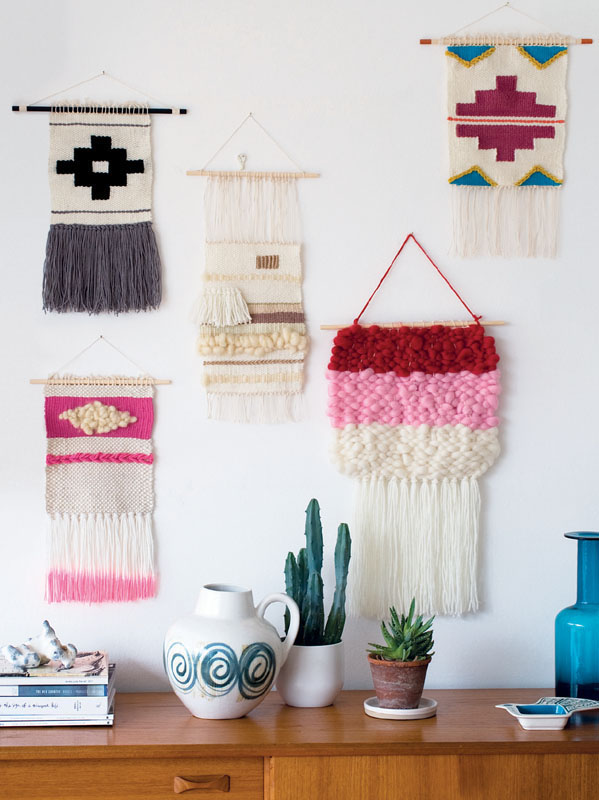
THERE ARE ONLY A FEW SPECIALIST TOOLS YOU WILL NEED TO GET STARTED ON YOUR CREATIVE JOURNEY WITH WEAVING, AND THE TECHNIQUES ARE ALL VERY SIMPLE.
This list outlines the essentials and how they are used to create woven projects.
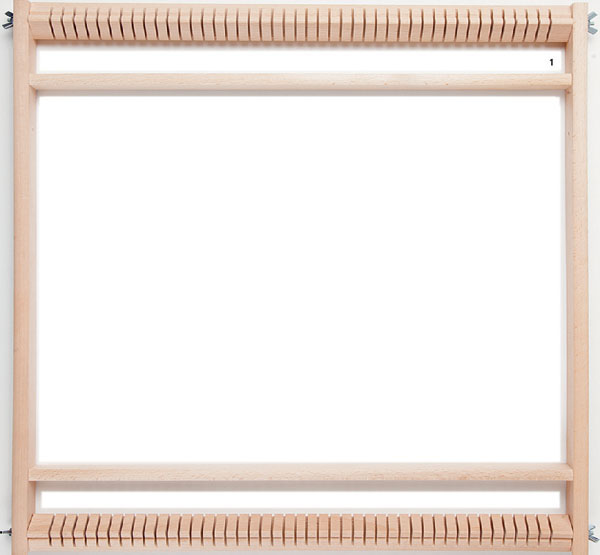
WEAVING LOOM (1)
This is the frame onto which the foundation warps are secured and which will hold the weaving as you work. You can make a simple frame (see ).
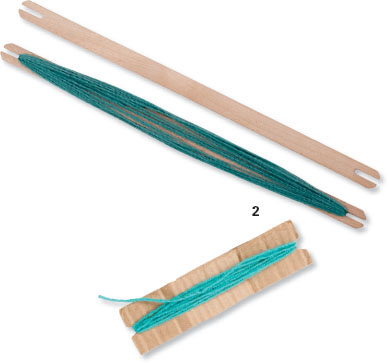
WEAVING SHUTTLE (2)
This is commonly a piece of flat wood with indents or grooves at each end. The yarn is wound around it (see ) and then it is used for passing the yarn through the warps. If you dont have a wooden shuttle, you can create your own by cutting notches in a strong strip of card.
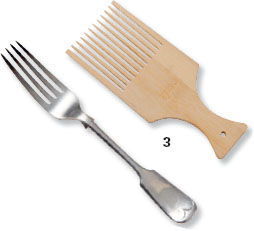
BAMBOO COMB (3)
Weaving combs come in a range of styles and sizes, and you can use a table fork instead of a purchased comb. A comb is used to beat down the wefts with each row of weaving (see ).

WEAVERS NEEDLE AND TAPESTRY NEEDLE (4)
A weavers needle is an extra-long needle with a blunt or rounded tip and a large eye. These needles are used to guide the yarn through the warps when working smaller areas (see ).
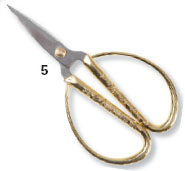
SHARP SCISSORS (5)
Short, sharp-bladed scissors are ideal as they will be able to snip through the different materials without difficulty, and the shorter length of the blades makes them easier to use precisely.
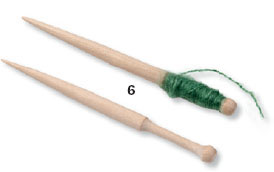
BOBBINS (6)
These are available in different styles, designs, and finishes, and are used for carrying smaller volumes of yarn (see ). They have a pointed tip to make it easy to work through the warps, and an indented section around which yarn can be wrapped.
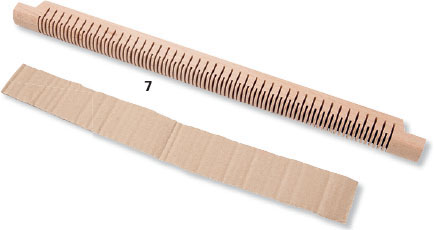
SHED STICK (7)
Often this is just a thin strip of wood, although more complex designs are available, such as the notched version below. However, a simple strip of cardboard will also work. A shed stick is used to speed up the process of weaving, reducing the need to feed the shuttle through the warps (see also ).

